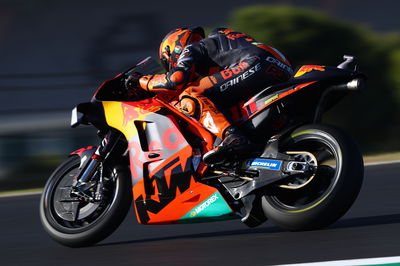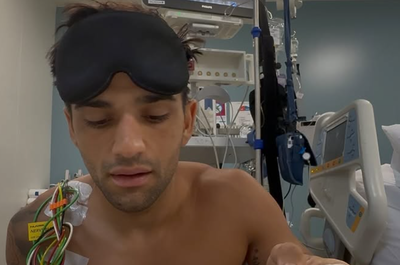Suzuki: 'Our time will come' for satellite MotoGP team
Suzuki may have claimed the 2020 title without the benefit of a satellite team, but it looks a question of 'when' not 'if' the factory expands its MotoGP line-up.
"All the other manufacturers in the paddock have satellite teams, so I think our time will come," confirmed Suzuki Ecstar project leader Shinichi Sahara.
Suzuki's MotoGP presence has been limited to a factory team since the start of the four-stroke era in 2002.

Suzuki may have claimed the 2020 title without the benefit of a satellite team, but it looks a question of 'when' not 'if' the factory expands its MotoGP line-up.
"All the other manufacturers in the paddock have satellite teams, so I think our time will come," confirmed Suzuki Ecstar project leader Shinichi Sahara.
Suzuki's MotoGP presence has been limited to a factory team since the start of the four-stroke era in 2002.
Supporting a satellite team requires the commitment of extra resources, but notably gives a factory access to much more track data. That is beneficial both in the short term, helping with set-up on a race weekend, and long term, when deciding on future development and the testing of new parts.
"It’s hard to know [the exact benefits of a satellite team], because so far I’ve only ever worked with two bikes on the grid," Sahara admitted. "Of course, it’s something we’re looking into for the future, but there are many different steps which need to be taken in order to get there.
“To be honest, we get a lot of useful feedback from our well-experienced test team. The contributions from our test riders, Sylvain Guintoli, Takuya Tsuda and Naomichi Uramoto, are excellent and vital.
"But extra information from a satellite team will become more important for us to keep up or improve our competitiveness in the future.”
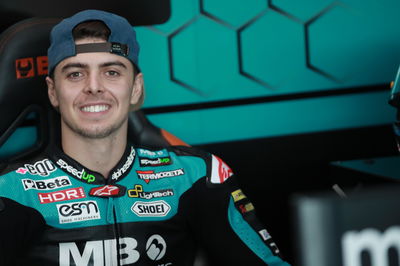
Which teams could be candidates for satellite Suzukis?
Having won the MotoGP title with Joan Mir, finished third with injured team-mate Alex Rins and boasting arguably the best all-round package on the grid in the GSX-RR, Suzuki won’t be short of interest from Independent teams seeking a future collaboration.
The leading contender at this stage looks to be Gresini, which recently confirmed it will end its role as Aprilia's factory team and return to full Independent status for 2022.
Choice of machinery is yet to be announced, but Gresini has already reserved one of its 2022 premier-class seats for the team's Moto2 rider Fabio di Giannantonio.
Aprilia is set to run its own factory entry in 2022 and, whilst it's possible that Gresini could continue alongside Aprilia as a satellite team, Fausto Gresini described his team's future as a 'huge project, and we will reveal the details little by little'. Words that don't seem to fit with a transition from Factory to Satellite Aprilia status.
It also seems unlikely that di Giannantonio has signed-up for a Satellite Aprilia move.
The young Italian has previously spoken of riding for Ducati like his idol Troy Bayliss, but a contract directly with Ducati Corse rather than a team would be the normal route.
Instead, di Giannantonio was seen in talks with Suzuki before agreeing the Gresini deal. Since Suzuki's factory line-up of Mir and Rins is already in place until 2023, such discussions hint at a possible future link between Gresini and the Hamamatsu manufacturer.
di Giannantonio was also one of the Moto2 riders (alongside Marco Bezzecchi and Joe Roberts) that declined the ex-Andrea Iannone Aprilia MotoGP seat for next year. If di Giannantonio was expecting a satellite RS-GP at Gresini in 2022, why turn down an 'upgrade' to official Factory Aprilia status, also with Gresini, for 2021?
The 22-year-old Italian has completed two seasons in Moto2 so far, with Speed Up, taking four podiums. For comparison, Mir only did one season in Moto2 (four podiums, no wins) before joining Suzuki in MotoGP as a 21-year-old.
Another major benefit of having a satellite team is that an in-demand manufacturer like Suzuki has somewhere to place rising stars such as di Giannantonio, sizing them up for promotion to the factory team.
However, Gresini - which fought for the title with Sete Gibernau and Honda machinery in the early years of the MotoGP era, also winning races with Marco Melandri and Toni Elias - might not be the only satellite Suzuki possibility.
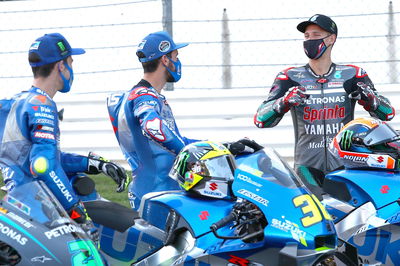
The Petronas-backed Sepang team is currently partnered with Yamaha, winning six races this season – more than any other team, factory or satellite - with Fabio Quartararo and Franco Morbidelli.
But when Sepang was negotiating its MotoGP move for 2019, Crash.net understands that serious talks also took place after an approach by Suzuki, offering full-factory bikes.
While Sepang and Petronas ultimately decided on Yamaha (where they have one set of Factory-Spec machines and one set of A-Spec) it is thought to have been a close decision.
The Sepang-Suzuki discussions are also interesting in that, if Suzuki was indeed ready and willing to support a satellite team for 2019, the delay in getting more GSX-RRs on the grid is as much down to finding the right partner than resources at the factory.
Is there a chance that Sepang could revive talks with Suzuki for 2022?
It's certainly possible, with Yamaha racing boss Lin Jarvis explaining that Valentino Rossi only has a one-year contract since Yamaha and Sepang do not yet have a deal in place for 2022.
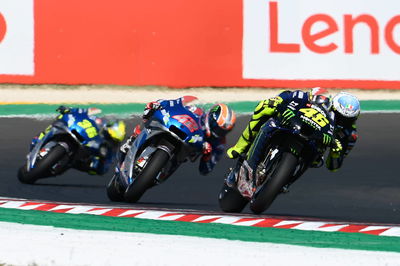
Rossi himself is one of many riders to have been complimentary about the performance of Suzuki this season.
And unlike his fellow riders, Rossi also has a MotoGP team presence from 2021, when younger brother Luca Marini will be backed by VR46 at Avintia Ducati, ahead of what is expected to be a full VR46 MotoGP project in 2022. But which machines will they run?
Rossi and current Suzuki team manager Davide Brivio go back a long way. One of the key people to convince Rossi to make the shock move from Honda to Yamaha at the end of 2003, Brivio served as The Doctor's team manager during his title-winning years on the M1.
Both then left Yamaha at the end of 2010, with Brivio continuing to manage Rossi as a VR46 consultant before taking up the Suzuki offer ahead of the factory's 2015 MotoGP return.
"Suzuki work very well. I think Brivio made a fantastic job, because he's able to fuse the work from Japan with very strong work in Italy," praised Rossi. "And especially he is able to convince the Japanese to work together with the Europeans and Italians and they make a very strong team."
Could the Rossi-Brivio connection clear the way for VR46 Suzukis in 2022?
Given the depth of the Rossi-Yamaha association, M1s are perhaps more logical, but what then for Petronas? Unless Yamaha merged either Petronas or VR46 with its Factory entry, it would need to support six machines. Meanwhile Monster, a major sponsor of Yamaha, Rossi and VR46, has just announced it will also back Suzuki from next season.
All of which leaves Suzuki with several competitive Satellite options to mull over for 2022 (assuming a Gresini deal wasn't effectively done by the time di Giannantonio signed in October) with Brivio giving a deadline of "March-April".
"We feel we need to get more information on track and having just two riders, in some situations, is not enough. Especially when weather conditions mean only a few sessions in the dry," Brivio said. "We would like to have another team but this project has to get approval from our top management and this is something that is going on.
"Of course, as the target is 2022, we have to decide in early 2021. Maybe before March-April maximum otherwise we have no time to get organised. It's still work in progress. No decision yet..."
